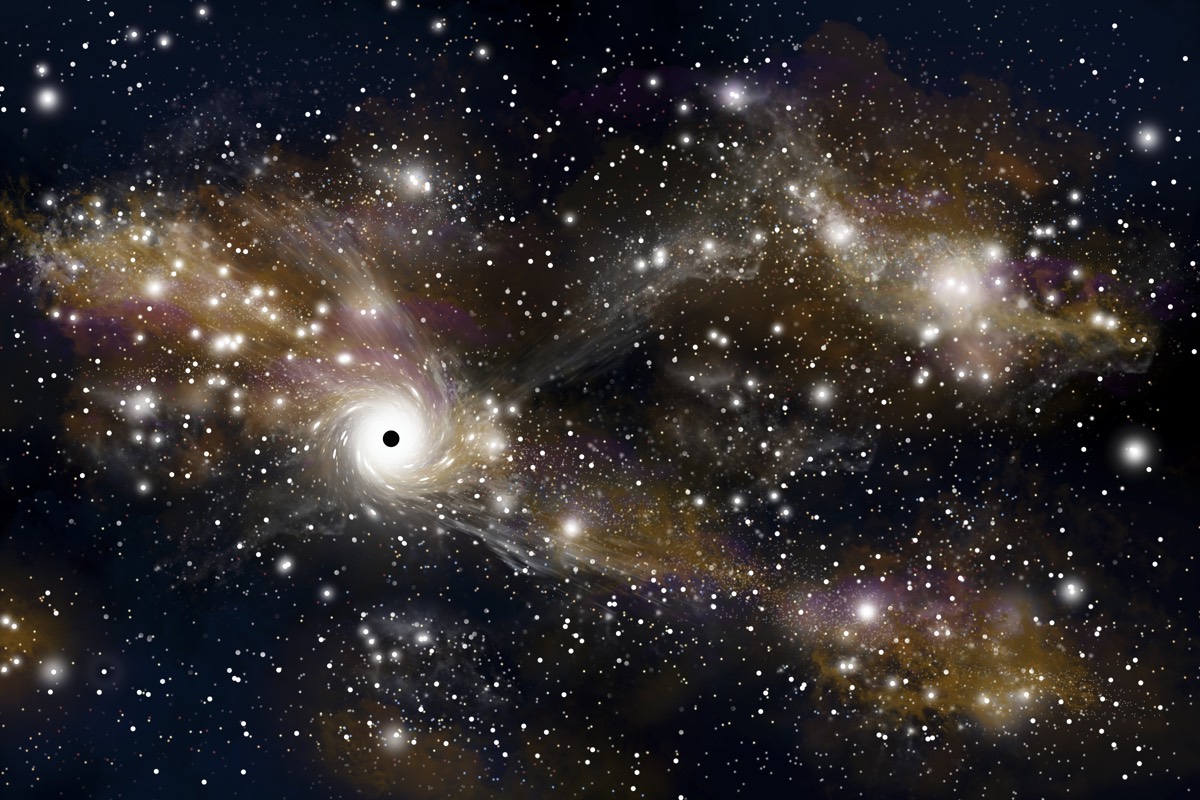These Wisps Around Black Holes Could Reveal How the Cosmic Beasts Eat

DENVER — You've seen the first close-up of a black hole. Now, get ready to see the faint wisps of matter surrounding the object.
The international team responsible for the first-ever image of a black hole's shadow already has plans to take a better, more detailed image. And that image could reveal new details about the matter and magnetic fields wrapped around the supermassive, distant object at the center of galaxy Messier 87 (M87).
More-detailed images, along with movies of the black hole that are already in the works, could help explain how black holes gobble up matter from the rings of hot gas swirling around them (called accretion disks) and how the objects produce bright jets of superfast matter on the scale of galaxies. That's according to researchers from the Event Horizon Telescope (EHT) team who spoke to a crowd of physicists here at the American Physical Society's April meeting. [9 Ideas About Black Holes That Will Blow Your Mind]
To image the M87 black hole in more detail, the researchers need to alter their approach, said Shep Doeleman, the Harvard University astronomer who lead the EHT team. Specifically, the scientists need to increase the frequency of the radio waves they're studying and add new radio telescopes to the EHT network. Both projects are already underway, he said, and should sharpen the already remarkably sharp image. (The existing image really is remarkably sharp when you consider that the supermassive object in question is so far away that, as viewed from Earth, it looks no bigger than an orange on the surface of the moon.)
In particular, the team hopes to image curling wisps of duller matter that simulations suggest should surround that bright ring already pictured, said Avery Broderick, an astrophysicist at the University of Waterloo in Canada who works on interpreting data from the Event Horizon Telescope (EHT). The shapes of those wisps should tell physicists whether a long-held theory of how matter gets knocked from a black hole's accretion disk into its throat is correct.
"One of the stories that we tell our graduate students is that the 'magneto-rotational instability' drives accretion," or the process in which black holes suck in nearby gas, Broderick said.
Physicists believe, he explained to Live Science after the talk, that as turbulence shakes the hot material of the accretion disk, its shaking particles magnetically tug on each other across vast distances. That magnetic tugging causes some of the whirling matter to slow down and fall out of orbit past the event horizon and into the black hole; this material forms the wisps that the researchers hope to study.
Get the Space.com Newsletter
Breaking space news, the latest updates on rocket launches, skywatching events and more!
"But that's largely a story born of ignorance and failed imagination," Broderick told the crowd at his talk, "because we don't know what else would do it, and we've tried" to find alternative explanations.
A more detailed image could confirm or reject that theory, he said.
"What those wisps would do is they would give you a way to directly test that, because you're looking at [the direct result of magnetic turbulence]," he said.
Careful imaging of the wisps, combined with an effort to image the black hole in motion, would help physicists understand, in unprecedented detail, how black holes eat and grow, Broderick said.
At the same time, better images of the fainter material around the black hole might reveal structures that would help the team explain those jets of matter, Doeleman told Live Science. The researchers hope to capture images of matter twisting away from the accretion disk and forward, almost in the direction of Earth, following the actual path of M87's bright jet.
"We've opened a window, and we're not done looking through it," he said. "Stay tuned."
- The 12 Strangest Objects in the Universe
- Stephen Hawking's Most Far-Out Ideas About Black Holes
- Spaced Out! 101 Astronomy Images That Will Blow Your Mind
Originally published on Live Science.
Join our Space Forums to keep talking space on the latest missions, night sky and more! And if you have a news tip, correction or comment, let us know at: community@space.com.

Rafi wrote for Live Science from 2017 until 2021, when he became a technical writer for IBM Quantum. He has a bachelor's degree in journalism from Northwestern University’s Medill School of journalism. You can find his past science reporting at Inverse, Business Insider and Popular Science, and his past photojournalism on the Flash90 wire service and in the pages of The Courier Post of southern New Jersey.










